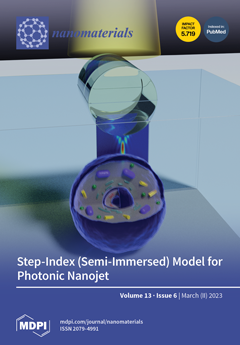Industrial pollutants pose a serious threat to ecosystems. Hence, there is a need to search for new efficient sensor materials for the detection of pollutants. In the current study, we explored the electrochemical sensing potential of a C
6N
6 sheet for H-containing industrial pollutants (HCN, H
2S, NH
3 and PH
3) through DFT simulations. The adsorption of industrial pollutants over C
6N
6 occurs through physisorption, with adsorption energies ranging from −9.36 kcal/mol to −16.46 kcal/mol. The non-covalent interactions of analyte@C
6N
6 complexes are quantified by symmetry adapted perturbation theory (SAPT0), quantum theory of atoms in molecules (QTAIM) and non-covalent interaction (NCI) analyses. SAPT0 analyses show that electrostatic and dispersion forces play a dominant role in the stabilization of analytes over C
6N
6 sheets. Similarly, NCI and QTAIM analyses also verified the results of SAPT0 and interaction energy analyses. The electronic properties of analyte@C
6N
6 complexes are investigated by electron density difference (EDD), natural bond orbital analyses (NBO) and frontier molecular orbital analyses (FMO). Charge is transferred from the C
6N
6 sheet to HCN, H
2S, NH
3 and PH
3. The highest exchange of charge is noted for H
2S (−0.026 e
−). The results of FMO analyses show that the interaction of all analytes results in changes in the E
H-L gap of the C
6N
6 sheet. However, the highest decrease in the E
H-L gap (2.58 eV) is observed for the NH
3@C
6N
6 complex among all studied analyte@C
6N
6 complexes. The orbital density pattern shows that the HOMO density is completely concentrated on NH
3, while the LUMO density is centred on the C
6N
6 surface. Such a type of electronic transition results in a significant change in the E
H-L gap. Thus, it is concluded that C
6N
6 is highly selective towards NH
3 compared to the other studied analytes.
Full article






